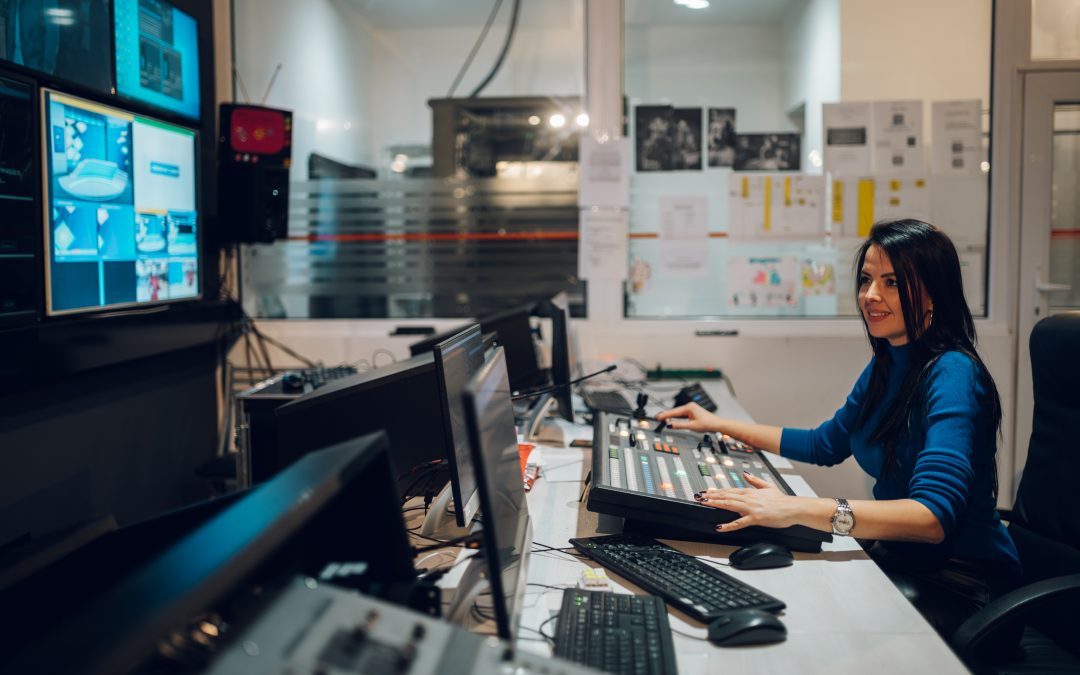I can’t tell you how often, after telling someone I’m a television producer, I get the follow-up question, “So… what do you DO?” And I get it. I remember watching the “executive producers” accept the Oscar for Best Picture at the Academy Awards every year and wondering, “They didn’t film it, they didn’t direct it… so what did they actually DO?” To be honest, I’m still not sure what Hollywood producers do, but I CAN tell you what I do as a producer at Discover Mediaworks.
Owning the Project
If you think of building a house as an analogy for creating a video project, then the producer would have a similar role as the construction manager. While they don’t physically pour the concrete, or pound nails (that’s how you build a house right?); they oversee the planning, design, and execution of the project from beginning to end. To use a term common across most industries, they’re project managers. Depending on the size of the company and the production team, producing can include a variety of roles and responsibilities. At Discover Mediaworks, those responsibilities fall into four main categories: client communication, planning, production and post-production, and delivery and debrief.
Client Communication
For larger clients or projects, there is sometimes a separate role that acts as the “point person” for client communication, but in most cases, this falls on the producer. Communicating with the client is one of the most important aspects of a successful project. From kicking off the project and making team member introductions, to scheduling meetings, answering questions, and providing project updates, client communication ensures that everyone is on the same page and that the project is on track for success. When I produce an episode of Discover Wisconsin, these communications often involve requesting contact information for places or people we’re featuring in the show, as well as letting the client know when we plan to film.
Planning
Planning shoots is arguably the most time-consuming part of being a producer. First, there’s concepting, scripting, and storyboarding. At Discover Mediaworks, we have a team of collaborative creatives that work together on these steps, with the producer playing a big role. Second, there are the nitty-gritty logistics that go into a simple video that someone (read: the producer) has to take care of. From finding locations, equipment, talent, props, make-up, hair, and even FOOD stylists, to things as mundane as ordering lunch and booking hotel rooms, it’s the producer’s responsibility to make sure these tasks are checked off the list. Once confirmed, all of these details are compiled by the producer into what we call a production book – a simplified guide distributed to cast and crew that lays out every production detail.
Production and Post Production
During the actual production, the producer is always present, however their involvement varies from person to person and project to project. In all cases, the producer is there to greet the client and answer any questions that might come up during the production. On corporate video shoots, the producer will often act as the “director,” directing talent and ensuring the crew is capturing what we need according to the production book. On smaller productions, producers will sometimes act as a second cinematographer. And unless there’s an on-camera host, producers are often in charge of asking the questions to those being interviewed. The most important role of a producer on a production is to make sure that everything runs smoothly and according to schedule. Does this ever happen without a hiccup? Rarely. But it’s the producer’s job to determine how to handle any obstacle or issue that arises during a production.
Now when you’ve got a talented team of editors and audio engineers like we do at Discover Mediaworks, producers enter the post-production process with a sigh of relief. The hard part is over! But before making the handoff to the editor, producers create what’s called an “assembly edit.” This essentially means organizing the footage and laying out the “A-roll,” or dialogue layer, of the video. It sets our editor up with an organized, clear direction for the project. Next, the producer oversees multiple rounds of internal and client reviews and makes sure that feedback is taken into account, and any necessary revisions are made.
Delivery and Debrief
The project is done! But is it really? It’s the producer’s responsibility to ensure that every aspect of the project is finalized, approved, and delivered. This means making sure the client is happy, and that they have everything needed to acquire and utilize the deliverables as intended. Additionally, the producer is expected to hold an internal “debrief” with the production team to discuss what went well, and what didn’t. And most importantly, what can we learn from the experience?
Hopefully, this gave you some insight into the busy but exciting world of a video producer. And next time someone asks me what I do, instead of saying, “EVERYTHING!” I’ll refer them to this article.
About the Author:
Jessica Murphy is a Senior Series Producer at Discover Mediaworks, where she blends her knack for project management with her passion for storytelling. Jessica received her Bachelor’s in Journalism from the University of Minnesota and her Master’s degree from Northwestern. When she isn’t overseeing the creative production of brands like Discover Wisconsin and Into the Outdoors, you can likely catch her trailing her spirited toddler, Louis.

